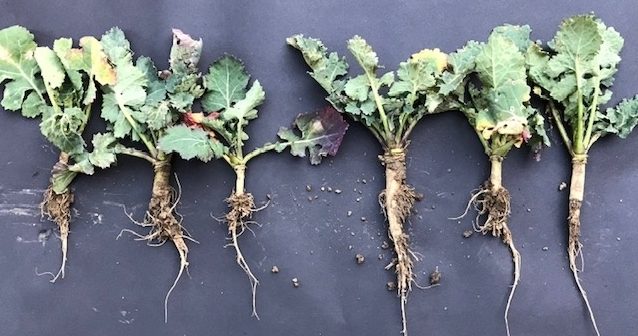Winter crops are really struggling following the wet winter, with poor rooting and low nutrient availability in waterlogged soils. So what can farmers do to give these crops a kick start this spring?
The temptation, according to Chris Gamble at Micromix-Olmix, is to go in with a nitrogen fertiliser application – but with stressed plants, poor roots and rinsed soils much is likely to be lost, damaging both gross margins and potentially the environment. Instead, producers should use something which will boost root growth, reduce plant stress, and provide nutrients for uptake through the leaf.
“Winter cereals are in survival mode – with wet soils they haven’t been able to get their roots down, which will seriously impact yield later in the year,” he explains. “We need to nurture these poor crops; they really need a rescue remedy to alleviate stress and get those roots growing.”
Applying scientifically proven biostimulants is a low-cost option which should produce dramatic results, says Mr Gamble. “Independent trials have shown that applying Proplex – a foliar biostimulant with powerful ascophyllum algae extract, humic acids, nitrogen and trace elements – boosts fresh root weight in winter wheat by 30%.”
However, it’s important to choose the right product, as each has a different mode of action. For example, phosphites and zinc / ammonium acetates are best suited to boosting higher potential crops, not stressed ones. And amino acid treatments alone will not stimulate root growth at low temperatures and in highly stressed waterlogged crops.
“Combining L-amino acids with bio-active algal extract will both relieve stress and enhance roots, while humic and fulvic acids improve the plant’s ability to metabolise and translocate nutrients,” explains Mr Gamble.
Adding the biostimulant to a tank mix with Multi-N – a foliar nitrogen and sulphur fertiliser – will give the crop everything it needs to get away this spring, he adds. “Throughout Eastern Europe and parts of Asia it is common practice to include stress relief and root enhancement in the tank mix with foliar nutrients to get crops growing when the snow melts, even at low temperatures.”
Mr Gamble suggests using just 0.5L/ha of Proplex mixed with 5-15L/ha of Multi-N as soon as it’s possible to travel. “When the crop has recovered and growth begins in earnest it will be important to reinforce trace element availability, given the rinsed soils this year. And a follow up dose of 1L/ha of Proplex at the end of tillering will build on the benefits of the earlier application.”
Another advantage of deeper roots is that crops will be better able to access soil nutrients throughout the growing season – as well as water, should the weather turn dry later in the year. “Well rooted crops also have better tolerance of root pests and diseases, and improved anchorage which will aid standing ability. Many farmers will be loath to spend too much on their crops this year, but a small investment to kick-start crops this spring will be immensely valuable when it comes to harvest time.”




